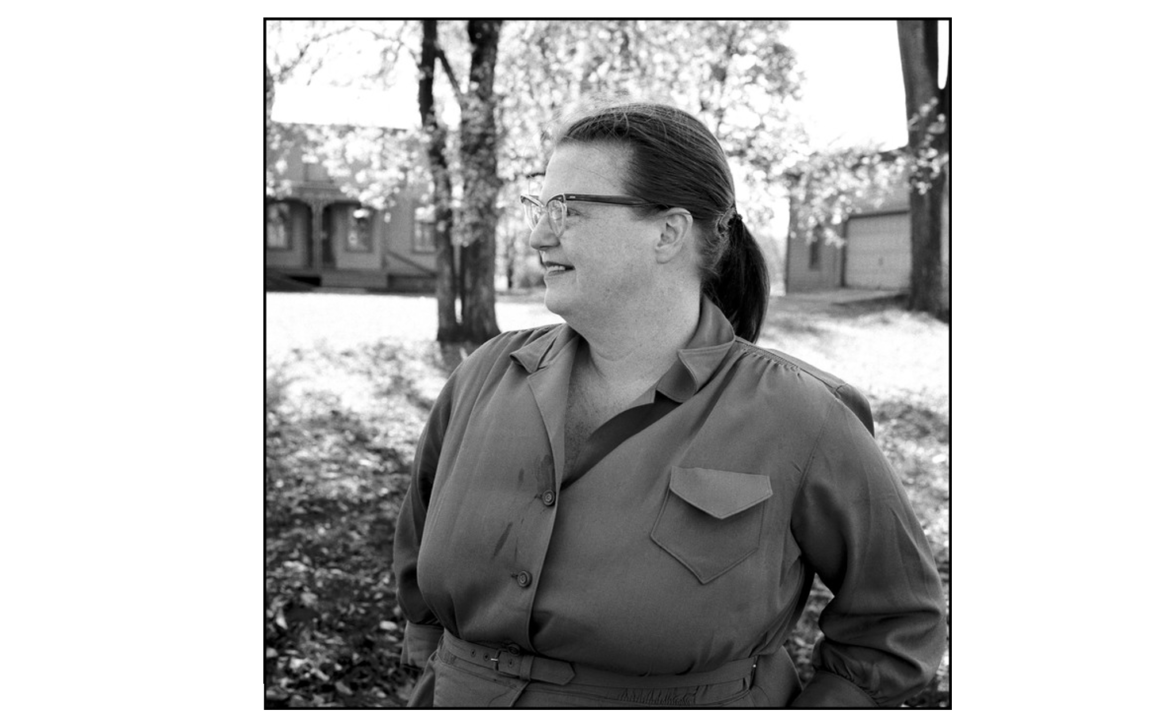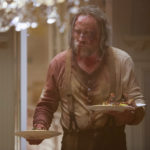
The Wicked Wit of Shirley Jackson
In late July 1957, America’s finest writer of horror stories replied to a certain Mrs. White, “If you don’t like my peaches, don’t shake my tree. Sincerely, Shirley Jackson.” Snappy and juicy at the same time, this is how Jackson wrote all her letters. She had received a large quantity of hate mail after publishing her blockbuster tale of bucolic evil, “The Lottery,” in a 1948 issue of The New Yorker. Mrs. White’s letter was nothing new. At 40, Jackson was in the prime of a prolific career, which spanned a couple of hundred short stories, six novels, two memoirs, and now these letters, edited and introduced by her eldest son, Laurence Jackson Hyman and Trinity College Dublin professor Bernice M. Murphy. Arranged chronologically, The Letters of Shirley Jackson charts a clear course through Jackson’s life. Born in San Francisco and raised in Rochester, New York, Jackson went to college at Syracuse and there met Stanley Edgar Hyman, with whom she would move to New York City. She began contributing to The New Yorker and manufacturing children, despite both her parents and Hyman’s issuing threats of disinheritance—her family were Christian Scientists, his Jewish, and Jackson’s father in particular was enraged by Hyman’s communist convictions. The new family moved to Vermont when Hyman got a job at Bennington College, and there Jackson remained until she died of heart failure at 48.Jackson was always a commercial success, but, as Hyman himself once wrote, she “received no awards or prizes, grants or fellowships; her name was often omitted from lists on which it clearly belonged.” In recent years, her biographer Ruth Franklin and other interested readers have worked to restore to Jackson a literary reputation that sexism had eroded; the fact that she wrote funny stories for ladies’ magazines counted strongly against her, it seems, and in her 2016 biography, Shirley Jackson: A Rather Haunted Life, Franklin connected this erasure to the bullying she suffered from her husband. As Franklin wrote, Hyman was a literary critic who once put “a praying mantis and a nightcrawler together in a milk bottle” so he could watch them fight to the death, and his chronic infidelity and sense of himself as terribly important worked in concert to undermine Jackson’s confidence.The name of Shirley Jackson has come to exude menace—we think of the terrifying halls of Hill House, the suppressed tragedy of We Have Always Lived in the Castle, her troubled home life, her early death. But the letters are startlingly vivacious and emphasize her gift for invention, which she used to transform ordinary people and events into magic.The earliest of these letters date from 1938, when Jackson was 21 years old. Already she is vehemently in love and direct about it. As an undergraduate, on her typewriter, “ernest,” at which she usually forewent punctuation and standard capitalization, she wrote Hyman forlorn letters veering between sadness at his rejections and joy at the strength of her own feelings:I LOVE YOU AS MUCH AS IF NOT MORE THAN I ALWAYS DID AND THAT LIE I TOLD YOU WAS ONE OF WHICH I CONVINCED MYSELF BECAUSE I WAS ANGRY AND HAD BEEN HURT AND IT SHALL NOT HAPPEN AGAIN IF YOU WILL TAKE ME BACK. (got it?)They married in 1940. As the years pass and the couple settles into married life, Hyman comes across as petty and cruel, a man who couldn’t remain faithful and also couldn’t seem to forgive the fact it made Jackson unhappy. In a parenthetical from a 1939 letter to Hyman, she notes her own sad tone, claiming it was not bitterness but “a sudden realization that once again i have been meddling and trying to tell you i don’t like the girls you fuck … and i am not supposed to do that. i’m sorry.” Yet Jackson’s descriptions of his antics in her own letters to friends are cutting. She’s so funny that the misery he causes seems to burn off like mist on a hot lawn. Hyman once calculated “in a fury,” she reported to a friend, that every page she spent writing to a friend represented $40 lost to the household, which is why her letters went so long. But he also figured that “the brownies i made were worth six dollars a brownie.” These calculations were based, she observes, on the fact that “he grudges every minute i do not spend writing although he is very fond of brownies.” This Hyman sees his wife’s work as the sort of thing one could measure in minutes and dollars; a commercial product whose relationship to time and money was unlike that of his own, more high-flown literary passions.Hyman appears grubbing and silly in these lines, and reduced to just another child-sized charge in Jackson’s baronial manor—another mouth to feed. In a letter to Ralph Ellison, a close friend of the family’s, she again appears the ruler of a topsy-turvy kingdom: “i am having a fine time doing a novel with my left hand and a long story—with as many levels as grand central station—with my right hand,” she writes, “stirring chocolate pudding with a spoon held in my teeth, and tuning the television with both feet.” In the disturbances of everyday life, Jackson found not despair but a sparkling malevolence that poured into her fiction.Jackson’s letters are stuffed with wisecracks and little sketches of Hyman looking stupid. In an early drawing, he bends pompously over a flower, the caption reading “Stanley—A Critic.” When she’s angry at him, she writes: “dear o’hyman, i’m so sorry i can’t answer your last letter but i inadvertently tore it up and it fell in the fire. so sorry.”While she makes light of her obnoxious husband, the letters also show her talent for imbuing the innocuous with malign or mysterious intentions. She seems to have been drawn to the macabre throughout her life, but it was as an adult, ensconced in domesticity, that her feel for the gothic intensified and grew more inventive. As her daily life became more ordinary—clutch of kids, husband to clean up after—more eerie and interesting things happened. In Bennington, she was once almost swept away in a flash flood. A nanny named Emma appears in letters to her mother at first to be a godsend, until one morning Jackson wakes “to find emma standing by my bed, whispering that she wanted to show me something; i followed her downstairs and she informed me that there was a little girl in her room playing with a bluebird” who had been “sticking pins in her” while “the Other People—not specified—were all standing outside listening.”A gale blows the windows of her garage doors in while she’s holding them, causing a hailstorm of shattered glass. Her son Laurie cycles directly into traffic. Her daughter Sally turns silent and sad, eventually admitting she has been “whipped with a yardstick, slapped in the face, had a clothespin fastened onto her ear, called a liar and a thief, and been made to stand up in front of the class to be publicly humiliated” by an abusive teacher at her school. In the disturbances of everyday life, Jackson found not despair but a sparkling malevolence that poured into her fiction. In a letter to a friend dated 1960 (Jackson died five years later), she wrote of being haunted by “a kind of pact-with-the-devil series of dreams.” Almost 15 years earlier, she recalls in the same letter, she woke up one morning screaming “i didn’t sign i didn’t sign,” a terrifying episode followed by a second dream so scary she doesn’t actually say what happened, except that it caused her to write to her mother to ask if she had “ever been criminally attacked as a small child.” Her mother wrote back to Stanley, “asking if he knew i had been Imagining Things and Was There Anything Wrong Between Us?” The best things about Jackson’s best fiction have little to do with her life, because they are distinguished by the quality of her chilly prose and not by their subject matter. She certainly lived in a big depressing house in Bennington when she wrote The Haunting of Hill House, but Jackson wrote its malevolence into being: how Hill House “seemed somehow to have formed itself, flying together into its own powerful pattern under the hands of its builders, fitting itself into its own construction of lines and angles, reared its great head back against the sky without concession to humanity.” Whoever the devil was to her, it was his manner of drawing up paperwork that Jackson loved.Just as Hyman is a ghost of negative space in Jackson’s letters, she herself became a specter haunting American literature. Was that the “pact with the devil” she dreamed about—the tradeoff between making money and having literary status? Or was the demonic signature she dreamed of the one on her marriage license? Whoever the devil was to her, it was his manner of drawing up paperwork that Jackson loved, not the man himself—the contortions people will achieve to get what they want, the extremity of the way the past haunts us. The Letters of Shirley Jackson is a glimpse into one of literature’s most contested personal lives and the bargains she struck in order to live it.
Read More


